Ponte di Veja
Useful Information


| Location: |
Via Ponte di Veja, 1, 37020 Sant’Anna d’Alfaedo VR.
Lessinia Regional Nature Park. Near Corrubio. From Verona take SP14 or SP12 north, on SP14 turn left at Stallavena to Corrubio, on SP12 turn right in Corrubio. (45.608120, 10.970099) |
| Open: |
no restrictions. Trattoria Ponte di Veja: SEP to JUN Mon, Wed-Thu 7:30–20, Fri-Sun 7:30–23:30. JUL to AUG Mon-Thu 7:30–20, Fri-Sun 7:30–23:30. [2024] |
| Fee: |
free. [2024] |
| Classification: |
 Natural Bridge Natural Bridge
|
| Light: | bring torch for caves |
| Dimension: | H=50 m, L=17 m, A=602 m asl. |
| Guided tours: | self guided |
| Photography: | allowed |
| Accessibility: | no |
| Bibliography: | |
| Address: |
Ponte di Veja, Via Campostrin, 65, 37020 Campostrini VR
Trattoria Ponte di Veja, Via Ponte di Veja, 1, 37020 Sant’Anna D’Alfaedo VR, Tel: +39-045-754-5048. E-mail: |
| As far as we know this information was accurate when it was published (see years in brackets), but may have changed since then. Please check rates and details directly with the companies in question if you need more recent info. |
|
History
| 1914 | Luigi Benvenuto moved with his wife and seven children to this area and started a farm 300 m from the natural bridge. |
| 1927 | the Municipality of Prun sells the land and Luigi Benvenuto purchases the lot with the natural bridge. |
| 1932 | excavations of the caves surrounding the bridge. |
| 1957 | Trattoria Ponte di Veja opened. |
| 1990 | Lessinia Natural Park established by the Veneto Region. |
Description




The Ponte di Veja (Veja Bridge) is the largest natural bridge in Europe at 50 m high. It is the remains of a karst cave which collapsed on both sides, and only this short piece of the huge passage remains. In the arc there are still some small groups of stalactites visible. The bridge is well developed with a trail across and a trail through the opening. According to local lore, Dante Alighieri, exiled in Verona and the guest of Cangrande della Scala, was inspired by the bridge for the description of Malebolge. He wrote the XVIII canto of the Inferno of the Divine Comedy in the shade of the centuries-old chestnut tree at the Trattoria that since then has been called "Dante’s Chestnut Tree".
The natural bridge is surrounded by small caves. It is possible to enter some of them, sturdy shoes and a headlamp is recommended. Some caves were used in historic caves, one was closed by a 4 m high dry wall with an opening for a door. But the caves have been actually used since prehistoric times. Excavations in 1932 revealed Upper Paleolithic remains, between 100,000 years old and 10,000 years old. One of the caves contained the workshop of a flint toolmaker.
The natural bridge is easy to access, right in front is the Trattoria Ponte di Veja with a car park, which is the starting point of the trails. It also offers a nice possibility for refreshments afterwards. The trail splits, and one trail crosses the bridge on top, the other crosses through the opening. The latter is actually a section of the European long distance path E5. There are several educational signs along the trail which explain the geological and archaeological situation, unfortunately only in Italian.
The site is privately owned by the family Lavarini which also operates the trattoria. In 1914, Luigi Benvenuto Lavarini moved with his wife and seven children to a rural house 300 m from the natural bridge. At this time, the area was uninhabited and they started farming. In 1927, the Municipality of Prun held an auction for land, the large area was divided into strips which were sold separately. The area with the natural bridge was almost worthless for farming, it had many rocks, was difficult to access, uncomfortable and steep. So there was little interest in this strip of land, and Luigi Benvenuto was able to buy it quite cheaply at the auction. He built a stable with a kitchen, and the animals were grazing on the land. But it seems the Ponte di Veja became known and many visitors and passers-by crossed the farm for the natural bridge. It was a decent hike, and some people asked for something to drink. The family understood that an unparalleled opportunity was presenting itself and decided to open an inn. In 1957, Bruno Lavarini, his uncle Arturo, his brothers Elio and Guido and his mother Vittoria Carmela converted the stable into a small tavern. They opened it during summer and provided refreshment to visitors. At this time there was no road to the place, and also no water, sewage, or electricity.
The natural bridge is located in the Parco naturale regionale della Lessinia (Lessinia Natural Park), which is full of karst related sights. Another interesting point is the Parco delle Cascate di Molina. The waterfalls are not exceptionally spectacular, but they are formed by limestone rich karst water, which continually deposites tufa. So these are actually "growing" waterfalls, the limestone forms conic shapes which are quite typical for this kind of waterfall. The springs which feed the waterfalls are karst springs, which are the result of waterproof silt layers in the Biancone limestone, which blocks the water from going deeper. Instead, it flows on top of this layer to the valley and the spring.
A visit to the park is not complete unless you visit the Sant’Anna d’Alfaedo Museum, located at Piazza Dalla Bona in the village Sant’Anna d’Alfaedo. It is also named Museo Paleontoglogico e Preistorio (Palaeontology and Prehistory Museum). The limestones are full of fossils, and this museum has an extensive collection of those fossils. Another highlight is the Museo dei Fossili di Bolca (Fossil Museum of Bolca).
The park has numerous caves which are only accessible for cavers. Famous names are the Spluga della Preta (Spluga of Preta), Grotta del Ciabattino (Cobbler’s Cave), and Covoli di Velo e Camposilvano (Velo and Camposilvano Caves). While the caves are mostly vertical and difficult to visit, they were nevertheless equipped with educational signs explaining the background of the caves. And there are some strange rock formations which are also karst related, limestone pavements, karren and trenches. Worth a visit are the Valle delle Sfingi (Valley of the Sphinxes) and the Trincee di Malga Pidocchio (Trenches of Malga Pidocchio).
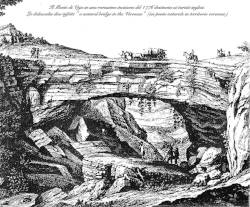
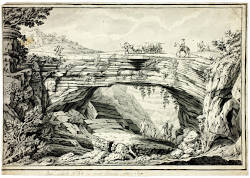
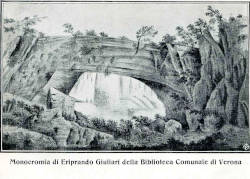
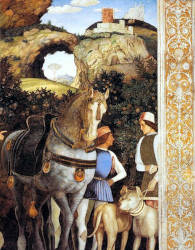
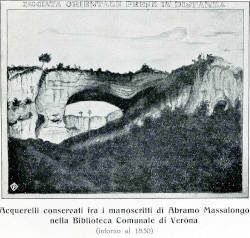
 Search DuckDuckGo for "Ponte di Veja"
Search DuckDuckGo for "Ponte di Veja" Google Earth Placemark
Google Earth Placemark OpenStreetMap
OpenStreetMap Trattoria Ponte di Veja (visited: 10-MAR-2021)
Trattoria Ponte di Veja (visited: 10-MAR-2021) Index
Index Topics
Topics Hierarchical
Hierarchical Countries
Countries Maps
Maps